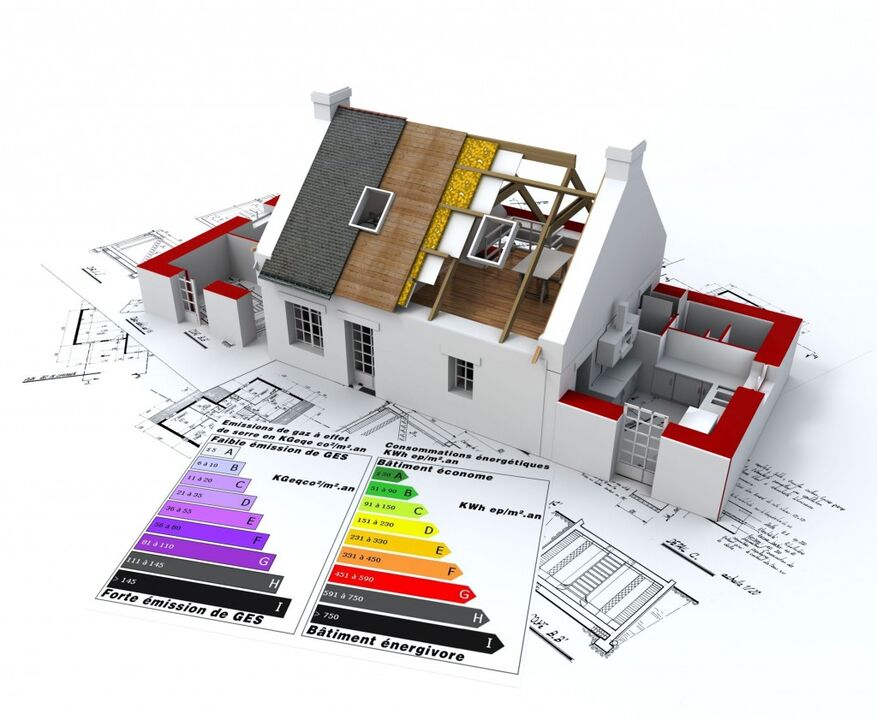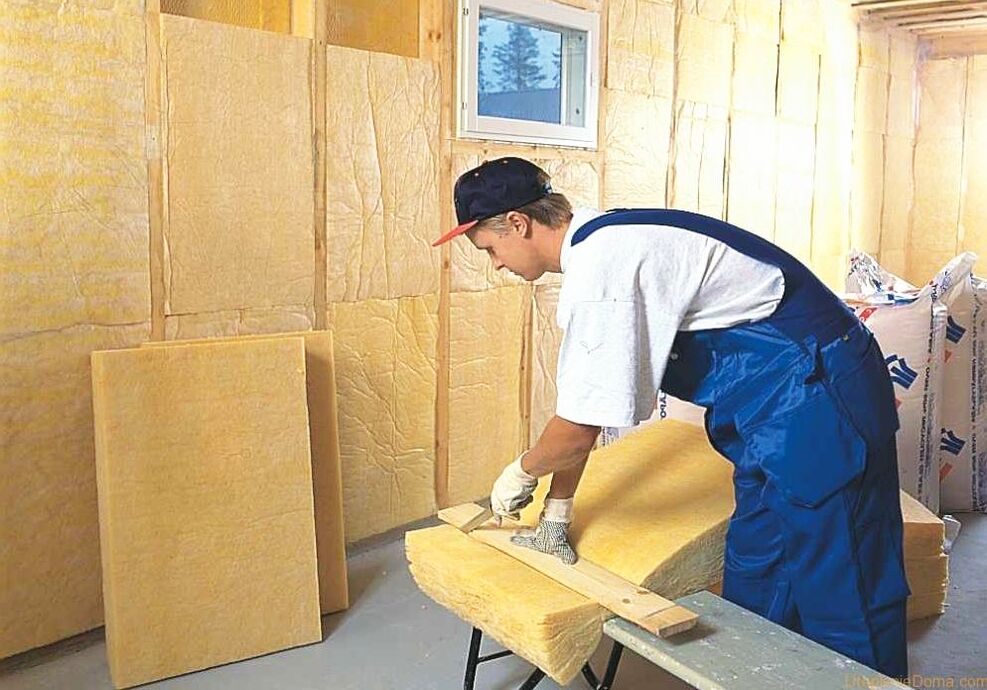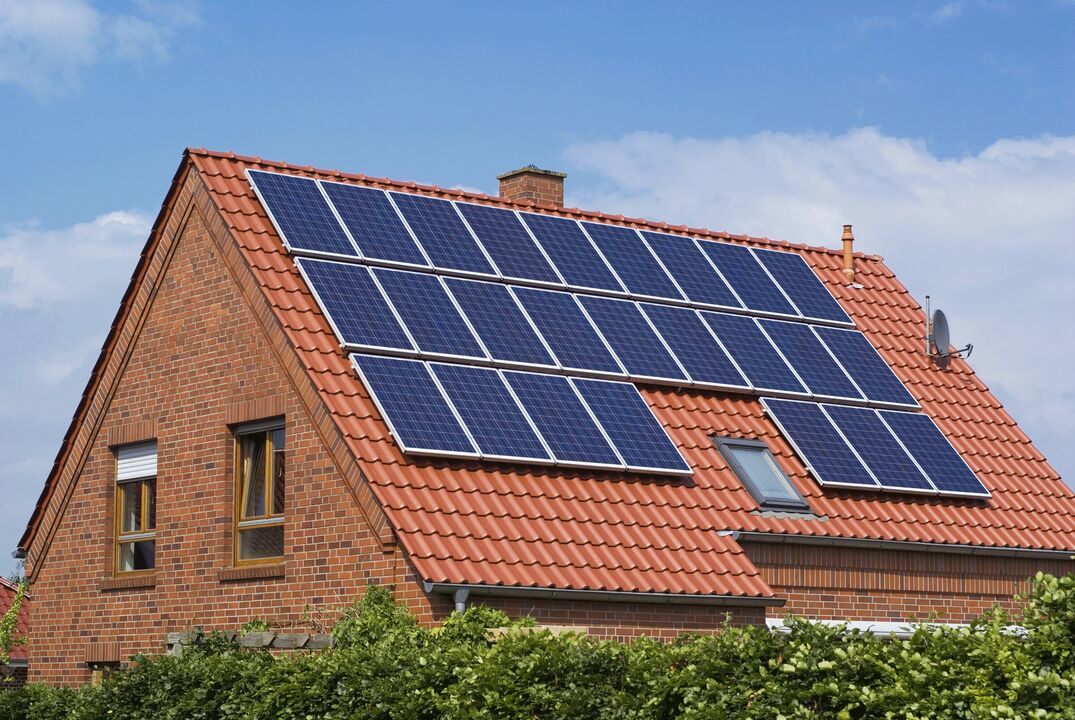
Every year more and more people choose to live in the private sector. Ecological home construction is a modern trend that cannot be achieved without the introduction of energy -saving technologies. The main secret of the effectiveness of the house lies in the combination of engineering design and architecture of the house. It is very difficult to implement energy -saving technology in a house that has already been built - this is a very expensive reconstruction, sometimes impossible.
For most countries, it is common practice to build wooden houses with energy efficient technology. It is very important to think through all the details of construction so that your solution turns out to be cost effective. For example, if you do not plan to live in your home permanently, there is no point in floor thermal insulation. Underfloor heating systems will become cheaper in the long run.
Thinking about the design of the house, you need to determine your priorities: large windows will bring more light into your home, but small ones will keep you warm. Most likely, you need to give up the idea of †‹вЂ‹ installing a panoramic window.
Place the room where you want to spend most of your time in the most sunlit part. As a result, the house will receive more solar power during the day. Rooms such as bathrooms, toilets, garages can be oriented north.
Thermal insulation of wooden houses
After building a house, it’s time to think about proper thermal insulation. The main goal at this stage is to minimize heat loss to the environment.
More than 40% of heat passes through the walls of the house, so it is important to take into account the following factors:
- changes in structure during shrinkage;
- precise connection of joints;
- future shrinkage calculations (for multi-layered beams it will be about 1%);
- compositional isolation at roof junctions.
The house loses 20% of its heat through the roof. It must be covered with the same material as the wall. When choosing a material for insulation and construction of the house, you must remember that the thickness of the insulating layer must be at least 20 cm.
Double -glazed windows

More than 20% of heat through windows. Currently, there are two types of glass that can prevent heat loss in the home:
- Low -emission glass, which has a material that allows ultraviolet radiation through the interior of the house while long waves (generated from heaters and humans) remain inside the house.
- Selected glass. Double -glazed windows in such windows are filled with gas, so that they have a lower thermal conductivity than air. The result is less heat transferred from the home to the environment.
We protect the floor
The following materials are used to protect the floor:
- Insulating compounds are an easy way to keep warm, and you can add a decorative cover right away. The only drawback is the high price.
- Aerated concrete is a cover of cement sand, it has nitrogen bubbles in the structure, which makes the floor very strong.
- Cement-sand slabs with foam plastic details, vermiculite, expanded clay, marble fragments.
Wall

The house loses 10% of its energy through the foundation walls. This is due to the freezing of the soil in winter. All experts recommend insulation of basement walls and ceilings. This will have a positive effect in protecting your home from environmental influences. The following materials are used primarily here:
- Polyurethane sprayer.
- Styrofoam.
- Expanded clay. It is the least popular, as it requires more labor input and has a higher thermal conductivity than previous materials.
Heating costs are the largest of all household costs. That is why the issue of heating and its efficient operation is popular in private wooden houses. In this regard, an integrated approach should be used, which consists of several steps:
- selection of modern methods of heating systems;
- cheap and environmentally friendly fuel;
- good thermal insulation in the house;
- thermal insulation of windows and doors.
In this case, you will spend the winter in comfortable conditions and without large fuel costs.
First of all, you should start with the insulation of wooden houses. This is the first important component. You only need to invest once during the home construction phase and this will save your budget significantly. A good insulated house is the house with the least heat loss, and therefore the lowest heating cost. Heat loss can be increased several times, even if only one window is poorly insulated. The use of advanced isolation techniques is recommended. Using the old method is a waste of time and money.
Boiler automation

A 1 ° C increase in internal temperature will increase fuel consumption by 5%. This problem can be maintained by installing a boiler automation system.
Automation allows you to control the state of comfort - a decrease or increase in the temperature outside the house will automatically change the temperature in the room without delay. This system saves fuel and is very efficient, will save you money in the long run. In situations where you leave the house for a few days, there is no need to heat the house to the maximum. In this case, automation can be set for a specific time. This means the system maintains a minimum temperature condition while you are not at home and warms it to normal temperature a few hours before your arrival.
Underfloor heating system
This system is considered the most economically viable today. And if you combine it with a condensing boiler, the efficiency will increase several times. Compared to traditional heating systems such as radiators, this is not only economical but also very fast. The underfloor heating system distributes heat to the entire height of the room, thus creating a comfortable indoor environment.
Solar panels
Nowadays, solar panels are becoming an increasingly common source of energy. The main problem that has stopped the introduction of the solar system into daily life is the use of solar cells to convert sunlight into electrical energy. This is a very expensive technology.

The main advantages of solar powered homes:
- endless solar energy;
- this energy source is environmentally friendly;
- no greenhouse gas emissions.
Solar panels have no moving parts. This means the only thing you need to do after installation is take care of the panel and keep it clean. Snow, dust, raindrops on the battery can reduce the amount of sunlight. Remember that dust on a structure can reduce the amount of electricity by up to 7%. But there is no need to do regular cleaning. One to four times a year is enough. For this you only need a hose with a nozzle. The battery is recommended to be replaced every ten years.
Where is the location of your home
The geographical location of your home will have a huge impact on solar energy efficiency. Electricity from solar panels depends on direct sunlight, so shading from tall trees or nearby buildings will create a barrier. The more hours the battery is exposed to direct sunlight, the more efficiently the system works.
Before you decide to install solar panels, find out the value of insolation in your area. Insolation is a measure that measures how much solar radiation hits the earth in a particular area over a period of time. High solar exposure means a large amount of electrical energy.
You must understand that only you can decide which energy saving system your wooden house will have. Discuss all the details with an expert, he will take into account all your wishes. Will make your future home not only energy efficient, but also attractive.
























